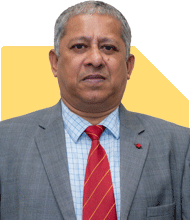Kanchan Rai |615 Answers |Ask -Follow
Relationships Expert, Mind Coach - Answered on Mar 28, 2024
Rai has a degree in leadership development and customer centricity from Harvard Business School, Boston. She is an internationally certified coach from the International Coaching Federation, a global organisation in professional coaching.... more

Hello Gurus, I am in trouble. I was living in Canada from last 10 years till last year when I had to come back to India - my father was not well. My father passed away in November last year - but my mother is alone and is not in best health. My wife feels that I have cheated her by getting her back from Canada and she wants to go back immediately. She feels that my elder brother (who is in Australia) should take care of my mother. Our relationship has soured over last few months as she is always using brutal language for my mother and for my brother - in fact, it has always been the case - but so far I was just ignoring her. But now every time she says something nasty, I strongly retaliate back. On top of it, my wife is pregnant too. I am in trouble - I don't know what to do - whether to go back to US and leave my mother alone or with my brother - or to stay back and fight with pregnant wife :(
Ultimately, there may not be an easy solution to your current dilemma, but by approaching the situation with empathy, understanding, and a willingness to communicate and seek support, you can work towards finding a resolution that is best for you, your wife, your mother, and your growing family.
You may like to see similar questions and answers below
Anu Krishna |1639 Answers |Ask -Follow
Relationships Expert, Mind Coach - Answered on Apr 12, 2023
Kanchan Rai |615 Answers |Ask -Follow
Relationships Expert, Mind Coach - Answered on Oct 31, 2023
Dr Ashish Sehgal | Answer |Ask -Follow
Relationships Expert, Mind Coach - Answered on Feb 20, 2024
Anu Krishna |1639 Answers |Ask -Follow
Relationships Expert, Mind Coach - Answered on Apr 06, 2024
Kanchan Rai |615 Answers |Ask -Follow
Relationships Expert, Mind Coach - Answered on May 26, 2024
Prof Suvasish Mukhopadhyay |2568 Answers |Ask -Follow
Career Counsellor - Answered on Jul 12, 2025
Prof Suvasish Mukhopadhyay |2568 Answers |Ask -Follow
Career Counsellor - Answered on Jul 12, 2025
Prof Suvasish Mukhopadhyay |2568 Answers |Ask -Follow
Career Counsellor - Answered on Jul 12, 2025
Prof Suvasish Mukhopadhyay |2568 Answers |Ask -Follow
Career Counsellor - Answered on Jul 12, 2025
Prof Suvasish Mukhopadhyay |2568 Answers |Ask -Follow
Career Counsellor - Answered on Jul 12, 2025
Prof Suvasish Mukhopadhyay |2568 Answers |Ask -Follow
Career Counsellor - Answered on Jul 12, 2025
Prof Suvasish Mukhopadhyay |2568 Answers |Ask -Follow
Career Counsellor - Answered on Jul 12, 2025
Prof Suvasish Mukhopadhyay |2568 Answers |Ask -Follow
Career Counsellor - Answered on Jul 12, 2025
Prof Suvasish Mukhopadhyay |2568 Answers |Ask -Follow
Career Counsellor - Answered on Jul 12, 2025
Prof Suvasish Mukhopadhyay |2568 Answers |Ask -Follow
Career Counsellor - Answered on Jul 12, 2025



















